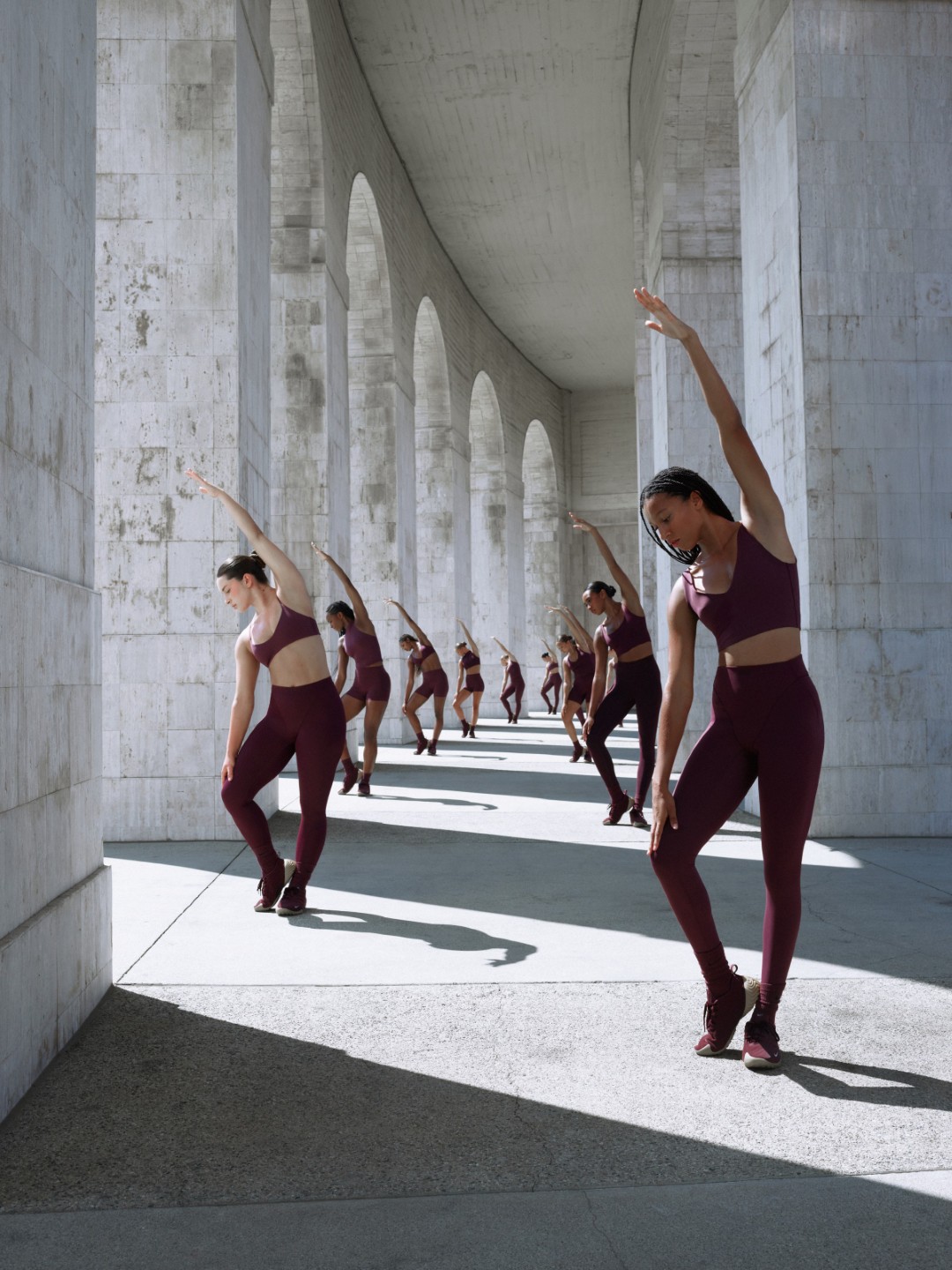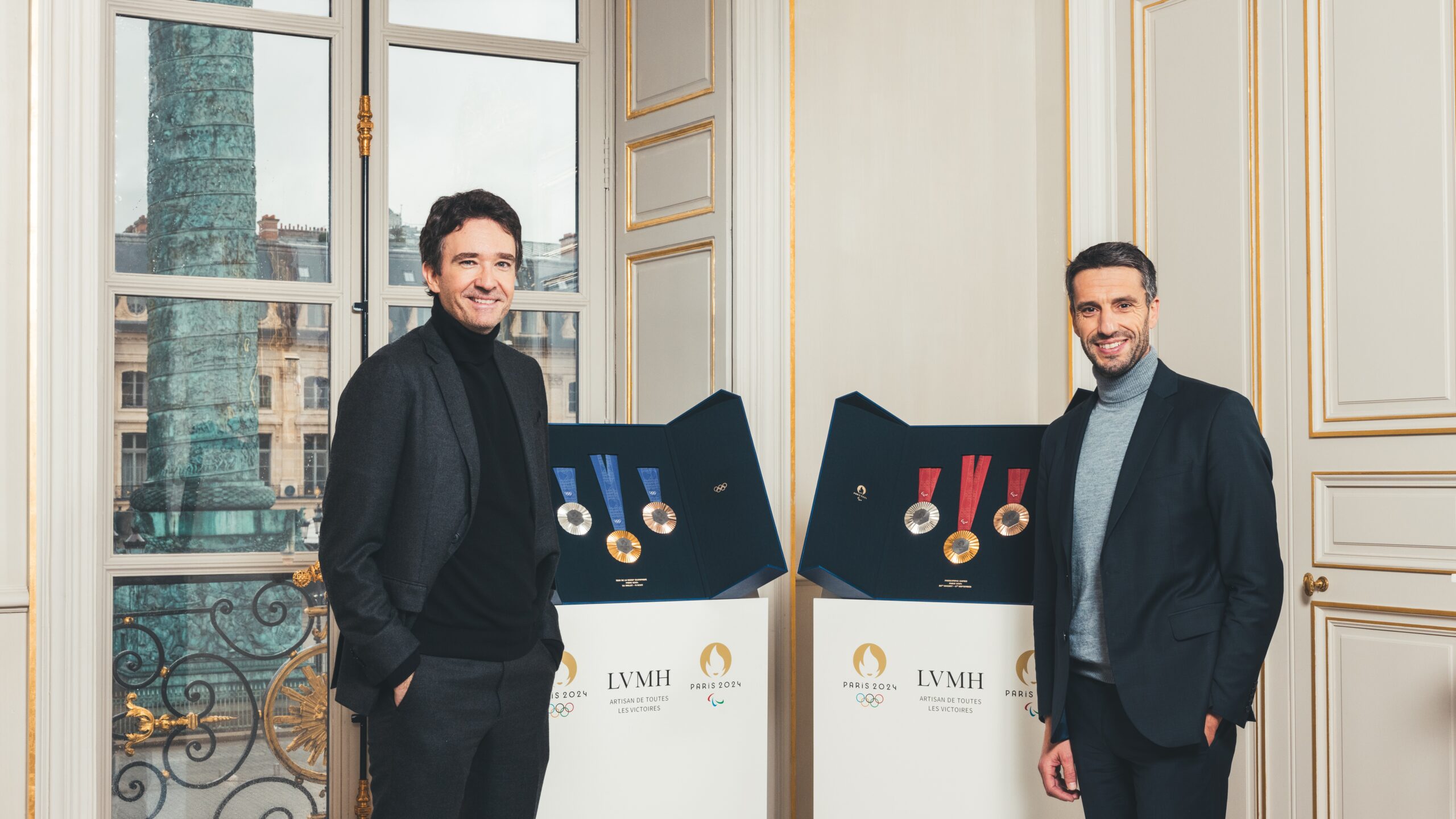With a month left until the beginning of the Paris 2024 Olympic Games, the French capital along with 16 other cities is ready to welcome the athletes and the fans from all around the world to witness the long-awaited sports event.
These Summer Olympic Games will be the third ones to be held in France—the sixth in total, considering the other three Winter Olympic Games in the history of the country—after 100 years since the last Summer Olympics hosted here in 1924. This alone makes Paris 2024 worthy of celebration for France and its citizens, so the level of preparation and thought put into every detail is outstanding. As is the case with the medals made with an original piece of the Eiffel Tower.
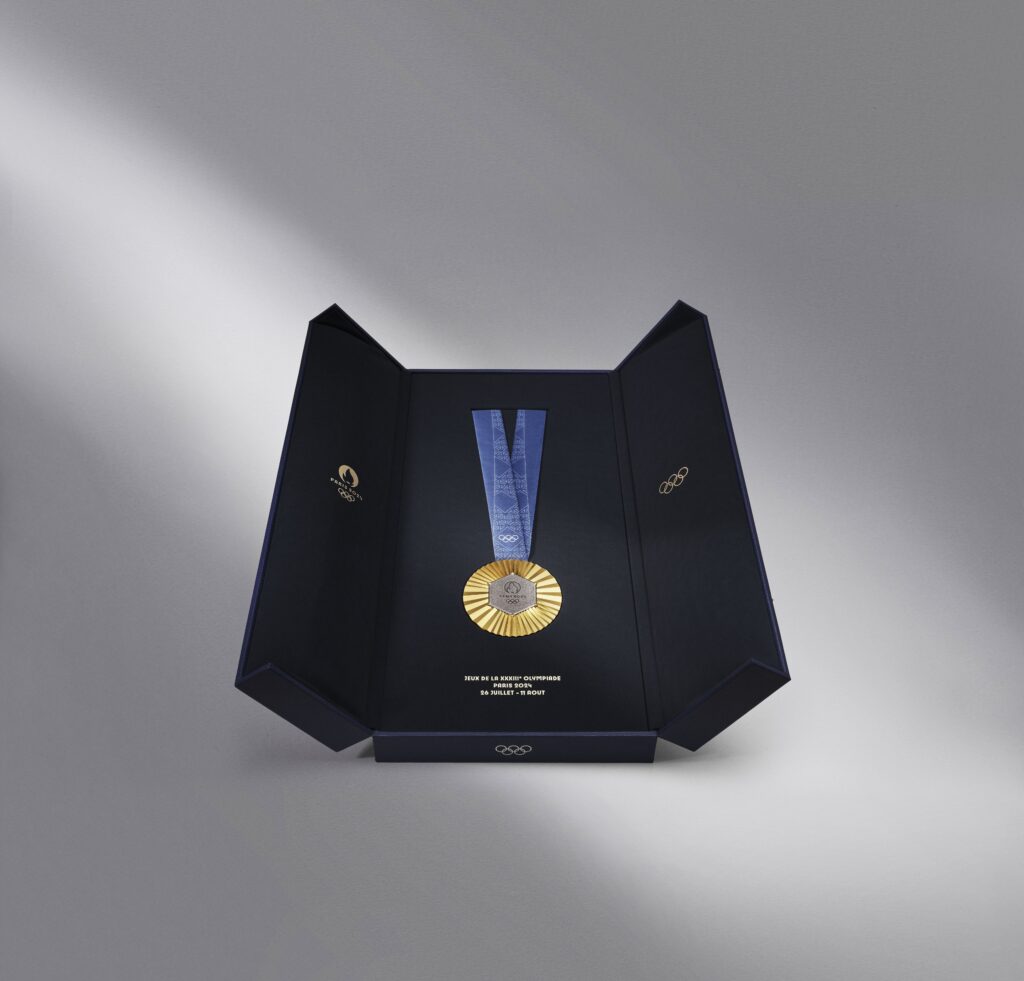
The idea was born in participation with the Paris 2024 Athletes’ Commission, chaired by Martin Fourcade. While searching for the symbol of these Games, the idea to merge the iconic monument of France and Paris with the most prestigious object of the Games was, safe to say, unmatched.
Worry not, the Eiffel Tower was not dismantled for the medals to be made. Instead, they used the pre-existing metallic elements that have been permanently removed and conserved after numerous renovations. The Eiffel Tower Operating Company has graciously allowed these genuine pieces of Parisian and French history to be used for the Paris 2024 Games and find glory again.
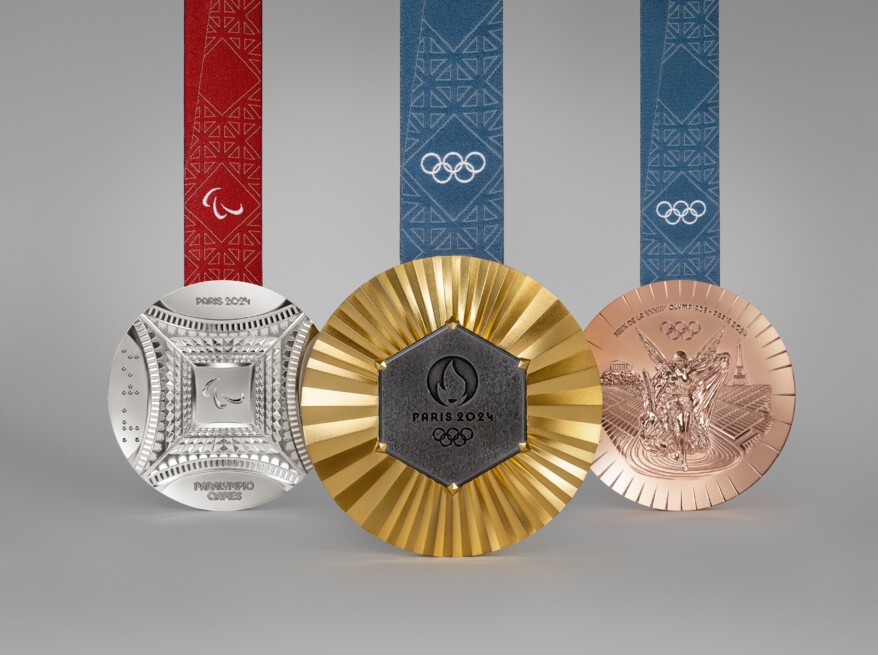
Developed by Chaumet, an LVMH Group company that is a Premium Partner of Paris 2024, the design incorporated three sources of inspiration: the hexagon, radiance, and gem setting. The use of a hexagon as a centerpiece of the medal’s design is inspired by the form of the Eiffel Tower’s iron, as well as the shape of France. The hexagon is surrounded by fine lines embossed to make the medals more prominent and bright. This detail represents the radiance of France and the athletes’ shining performances. Finally, the symbolic part of the design is the aforementioned use of iron from the Eiffel Tower. Six metal appendages are used to fix the hexagon in place, made possible due to the slightly concave shape of the medal, which adds depth to the design of each side.
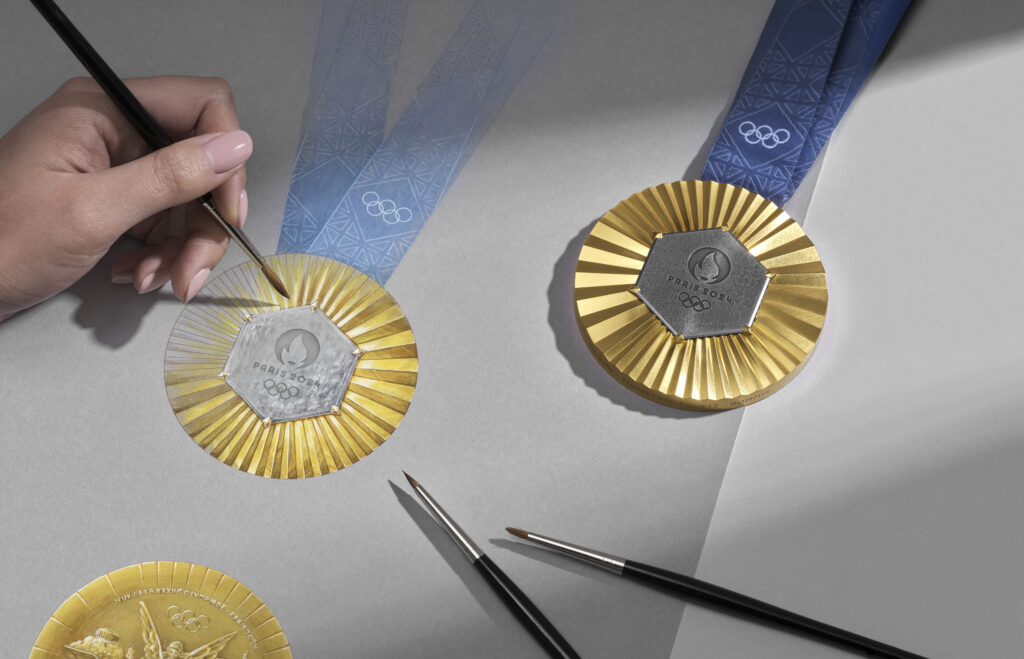
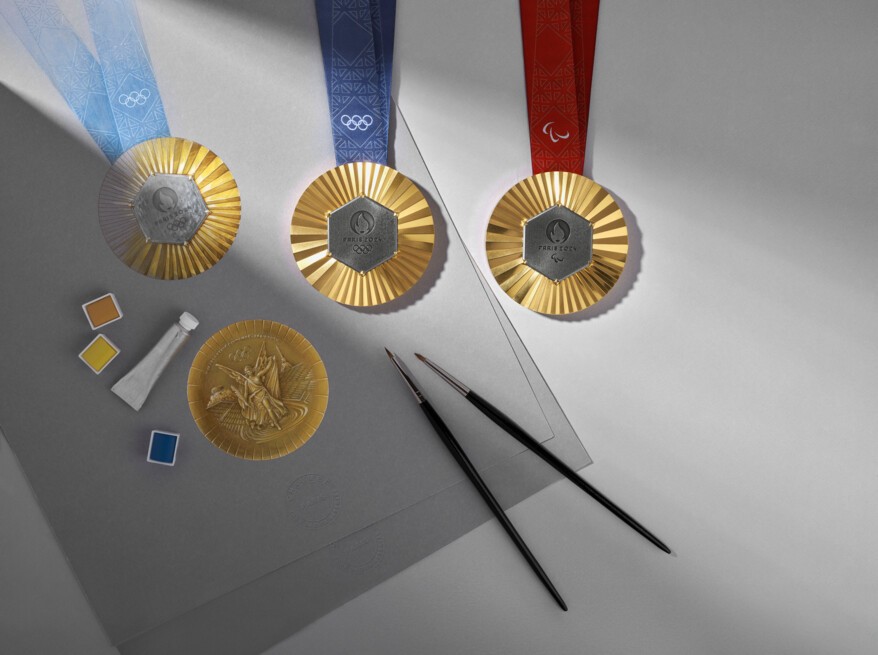
The other side of the Olympic medal is embellished with the goddess of victory Athena Nike designed by Elena Votsi. Together with The Acropolis of Athens, the goddess has been traditionally used on the medals since 2004, as a representation of the revival of the Olympic Games in 1896 at the Panathenaic Stadium. This year’s medal incorporates the Eiffel Tower to represent the hosting country of this year’s Olympics.
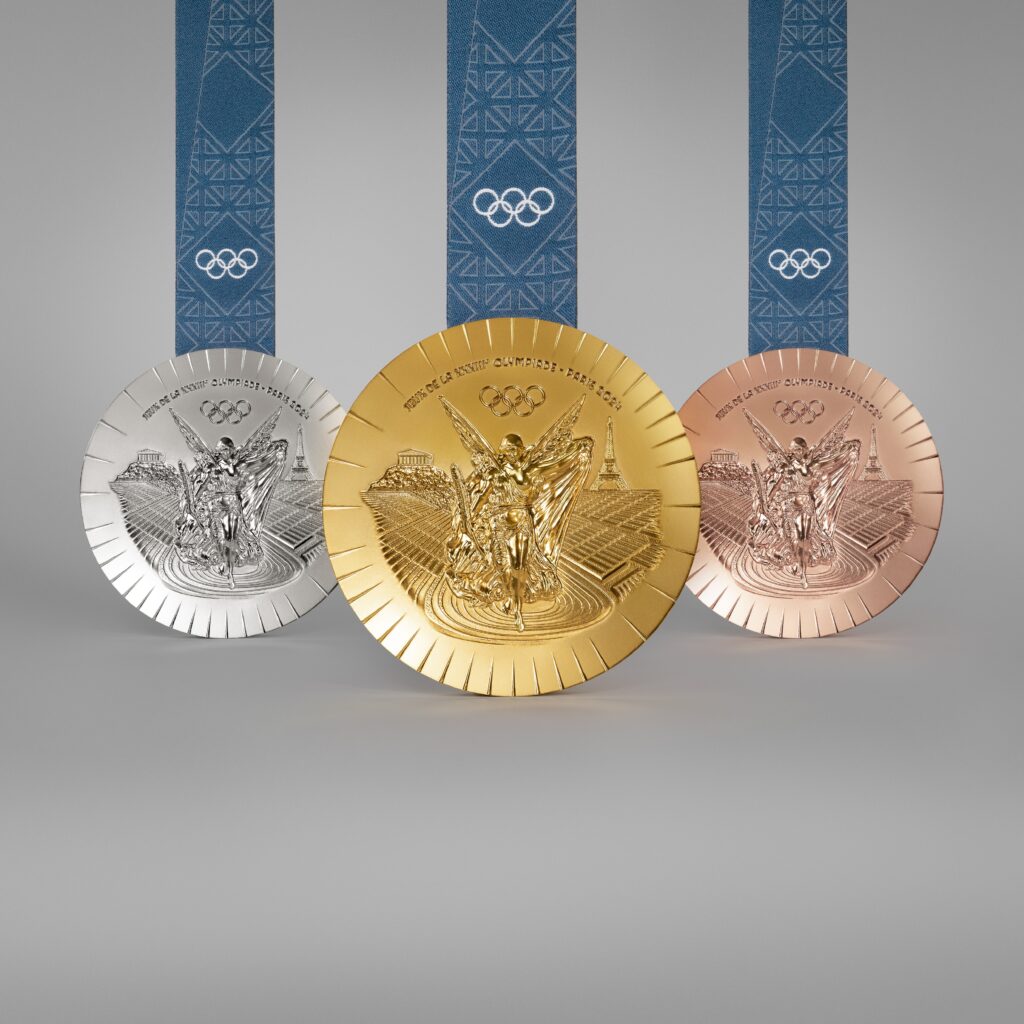
The Olympic and Paralympic medals share one side of the design—the side encrusted with the Eiffel Tower iron. While the reverse side of the Paralympic medals is a graphic representation of the Eiffel Tower from an upward perspective, a rarely seen angle. The words “Paris” and “2024” surround the feet of the tower written in universal Braille, the symbolic language of accessibility and a reference to its French inventor, Louis Braille. In addition to that, athletes with visual impairments will be able to feel the difference between the medals, with dashes engraved on the edge: I for gold, II for silver, and III for bronze.

Lastly, the design of the medals’ ribbons will be adorned with the Eiffel Tower’s latticework, as the final element signifying the symbol of the country’s rich heritage. The Olympic and Paralympic medal ribbons will only differ in colors—dark blue for the former and deep red for the latter—a mix of the first two coats of paint (“Venice red” and “red-brown”) used on the Eiffel Tower.




